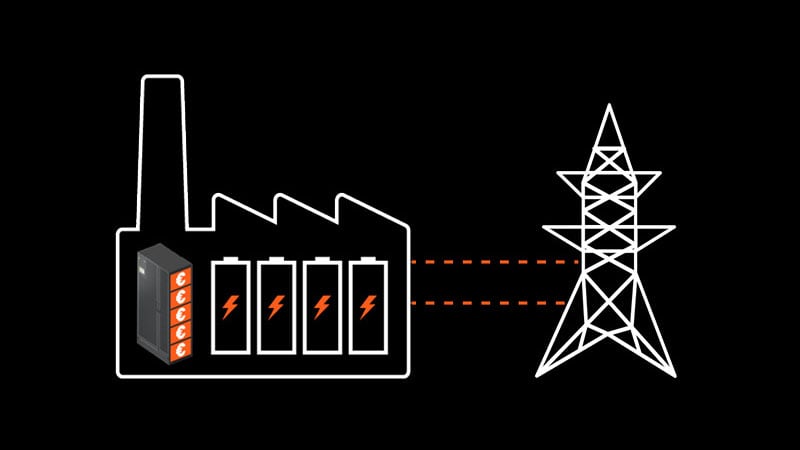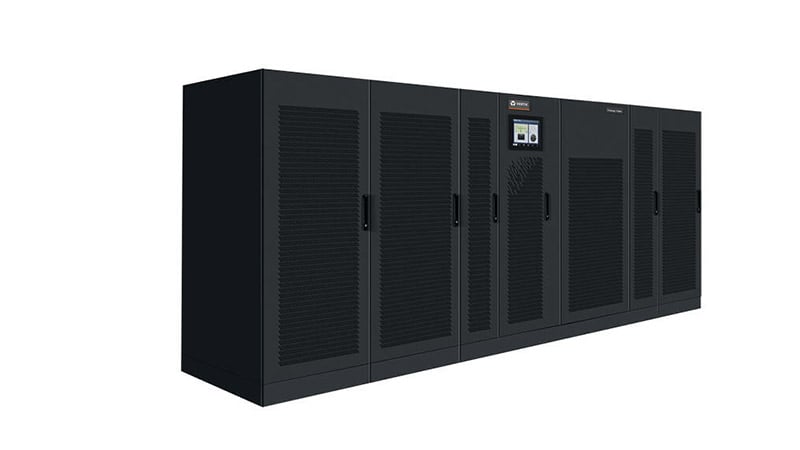As the issue of balancing supply and demand in electricity becomes more pressing for providers globally, many have implemented energy management and demand management strategies to alleviate the pressure on their systems.
Today, peak shifting capability in an Uninterruptible Power Supply (UPS) is a valuable feature that allows users to better manage energy consumption when electricity demand is highest. By temporarily storing energy during non-peak hours and releasing it during peak hours, users reduce the strain on the power grid and help balance supply and demand. This shifting results in cost savings for the user as electricity is typically more expensive during peak hours.
Balancing Supply and Demand: Strategies for Meeting Peak Electricity Loads
Electricity demand fluctuates between the highest point of system load (peak load) and the lowest (base load). To meet this demand, network operators rely on a combination of resources and strategies. One traditional approach is to use a combination of non-variable power plants and dispatchable generation, which can adjust its output to match demand. Other options for balancing supply and demand include long-term contracts for electricity, purchasing electricity in the spot energy market, and reducing overall consumption.
A possible increase in peak demand can be balanced by a corresponding increase in energy supply, thanks to the construction of additional generation, transmission, and distribution networks. An alternative method may be to reduce energy from the demand side through a reduction in load and moving toward lower peak periods.
There are various strategies in production and distribution facilities to reduce energy consumption and costs while meeting sustainability goals. Two examples are peak shaving and demand response.
It is important to understand that the majority of electricity bills are divided into two main components: basic energy costs for overall consumption during the billing period and demand costs for the highest usage or peak demand. Customers pay for electricity in two ways: consumption measured in kilowatt-hours (kWh) and demand measured in kilowatts (kW). Residential customers typically only pay for consumption, while commercial customers often have a demand rate and pay for both demand management and consumption.
Additionally, grid operators may charge demand fees to cover transmission costs. These demand charges can make up a significant portion of a bill, ranging from 30-70%, and vary depending on the season and time of day. They tend to be higher in the summer and during daytime hours. Customers are charged for demand costs based on their highest recorded usage, which is also known as peak demand.
The prices of the electricity tariffs that end users pay depend on the season and the time of day that energy is used. There are typically different rates that correspond to different time periods:
-
On peak (highest price)
-
Semi peak (low price)
-
Off peak (lowest price)
You can reduce or eliminate costly spikes in demand with a combination of solar energy and energy storage powered by artificial intelligence, which charges batteries when the sun is out and discharges stored energy during peak times of energy consumption.
Solar energy with batteries is thought to be the best way to reduce peaks. Other methods such as diesel generators or manual equipment shutdown all have significant disadvantages. Conversely, battery-powered energy storage systems do not generate noise and pollution, do not require personnel to operate, and do not impact business activities. In addition, they make solar energy feasible for more customers, generating additional savings.
Managing Peak Demand Costs
You can reduce demand costs by controlling or reducing electricity usage during periods of peak demand as determined by utilities. This can be achieved through a process called peak shaving, which involves temporarily reducing energy consumption for a short period of time to avoid on-peak expense. This can be done through load shedding, which involves excluding certain loads during periods of maximum peak demand, or through capacity addition, which involves adding on-site generation to increase available energy without increasing demand. On the other hand, load shifting involves a short-term reduction in electricity consumption followed by an increase in production later when electricity prices or grid demand are lower.
Apart from cost savings, this technology can present opportunities of revenue generation through demand response programs in those countries where utilities offer customers incentives to reduce their demand during periods of system-critical conditions or high electricity market cost situations. Users receive compensation to reduce the use of non-essential electricity or to move the electrical load at a different time.
Innovative Peak Shaving UPS Solutions
Vertiv has developed new features to pioneer the use of UPS systems in peak shaving applications. New features can be set up to use batteries to provide the additional power needed from the central system during the peaks. This demand management capability is available on the firmware of Vertiv™ Liebert® Trinergy Cube and Vertiv™ Liebert® EXL S1 UPS, which includes communication via Modbus with lithium-Ion batteries, enabling the receipt of real-time data and alarms from the batteries.
By adding peak shifting capabilities, Vertiv enables value creation for data center owners, allowing energy-intensive industries to utilize UPS systems in a proactive way. This is an optimal solution to provide demand management services and cost saving opportunities, especially in those sites where battery storage assets are already present and not utilized for most of the time.






